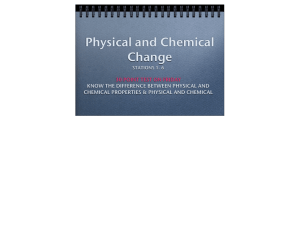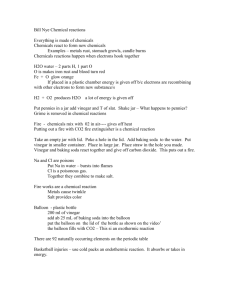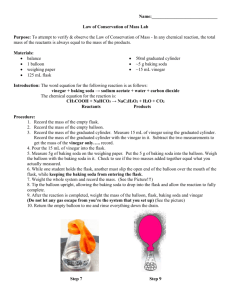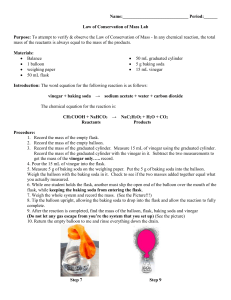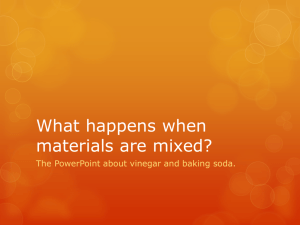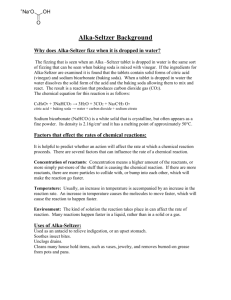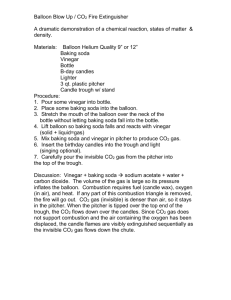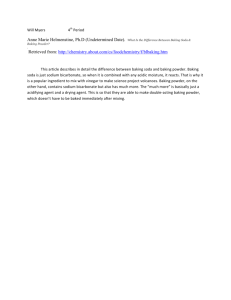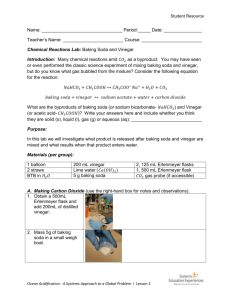Activity Sheet (word document)
advertisement
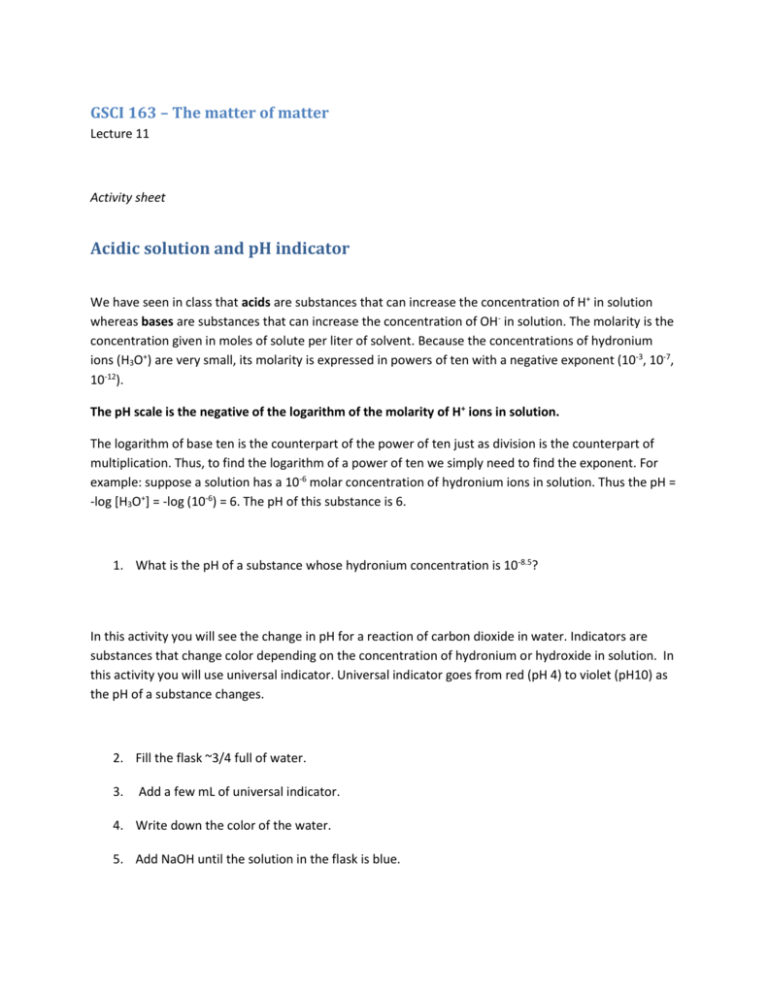
GSCI 163 – The matter of matter Lecture 11 Activity sheet Acidic solution and pH indicator We have seen in class that acids are substances that can increase the concentration of H+ in solution whereas bases are substances that can increase the concentration of OH- in solution. The molarity is the concentration given in moles of solute per liter of solvent. Because the concentrations of hydronium ions (H3O+) are very small, its molarity is expressed in powers of ten with a negative exponent (10-3, 10-7, 10-12). The pH scale is the negative of the logarithm of the molarity of H+ ions in solution. The logarithm of base ten is the counterpart of the power of ten just as division is the counterpart of multiplication. Thus, to find the logarithm of a power of ten we simply need to find the exponent. For example: suppose a solution has a 10-6 molar concentration of hydronium ions in solution. Thus the pH = -log [H3O+] = -log (10-6) = 6. The pH of this substance is 6. 1. What is the pH of a substance whose hydronium concentration is 10-8.5? In this activity you will see the change in pH for a reaction of carbon dioxide in water. Indicators are substances that change color depending on the concentration of hydronium or hydroxide in solution. In this activity you will use universal indicator. Universal indicator goes from red (pH 4) to violet (pH10) as the pH of a substance changes. 2. Fill the flask ~3/4 full of water. 3. Add a few mL of universal indicator. 4. Write down the color of the water. 5. Add NaOH until the solution in the flask is blue. 6. If you add NaOH to the solution, will the pH increase or decrease relative to pure water? Write down the dissociation equation. The solution should start with a pH 8-9 (blue). 7. Add dry ice to water. Write down what happens to the solution. 8. Dry ice is carbon dioxide in solid form. In contact with water it forms carbonic acid, and lowers the pH, which is the reason for the color change. CO2 (s) + H2O (l) → H2CO3 (aq) Write down the dissociation equation for the carbonic acid. Acid base reaction and decomposition reaction In this second activity we will see what happens when a weak acid (vinegar – acetic acid) with a base (baking soda – sodium bicarbonate) react. Describing the Chemical Reaction between Baking Soda and Vinegar Baking soda, a pure chemical called sodium bicarbonate, has the chemical formula NaHCO3. When dissolved in water baking soda separates into sodium (Na+) and bicarbonate ions (HCO3-): NaHCO3 ---> Na+(aq) + HCO3-(aq) Vinegar, a weak (5%) solution of acetic acid in water, partially dissociates into hydrogen ( H+) and acetate ions (CH3COO-): CH3COOH <--> H+(aq) + CH3COO-(aq) The reaction between baking soda and vinegar is actually two reactions, an acid base reaction followed by a decomposition reaction. When the two ingredients are mixed, hydrogen ions ( H+) from the vinegar react with the bicarbonate ions (HCO3-) from the baking soda to form a new chemical called carbonic acid (H2CO3). H+ + HCO3- ---> H2CO3 The carbonic acid thus formed then immediately decomposes into carbon dioxide gas (CO2) and water (H2O). H2CO3 ---> H2O + CO2 The overall reaction however, is often written as follows: NaHCO3 (aq) + CH3COOH (aq) ----> CO2 (g) + H2O (l) + CH3COONa (aq) Here is what you need to do: 1. Add 40 ml of vinegar (5% acetic acid) into the flask. 2. Measure between 3g and 8g of baking soda (sodium bicarbonate) and carefully place it inside the balloon. Write down the amount you measured. 3. Be careful with this step. Stretch the mouth of the balloon over the mouth of the flask avoiding dropping baking soda into the solution. When you have it secure, turn the balloon completely upright so that the baking soda inside the balloon pours into the vinegar. 4. What happens with the solution when the baking soda mixes with the vinegar? 5. Observe what happens with the balloon. Why does the balloon inflate? Compare the size of your balloon with neighboring groups after the reaction is over. 6. After the reaction is almost over, touch the flask and report whether you feel it colder or warmer than initially. Try to give an explanation to what you feel. It is carbon dioxide gas that you see bubbling and foaming as soon as you mix baking soda and vinegar together. That is what fills the balloon. The flask gets cooler because the reaction is endothermic, that is, it takes thermal energy out of the environment to proceed.

